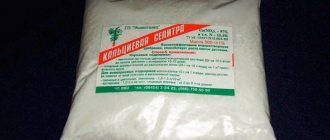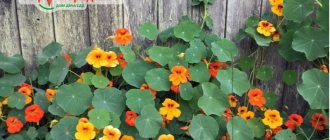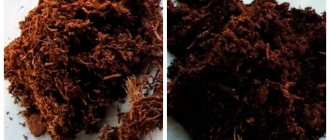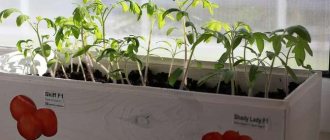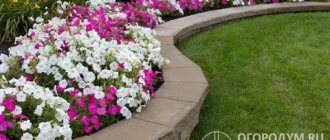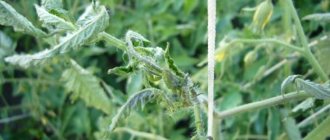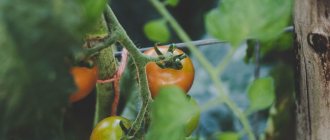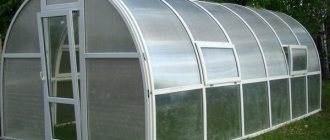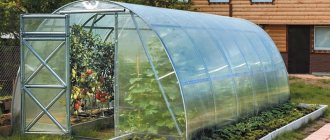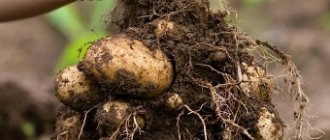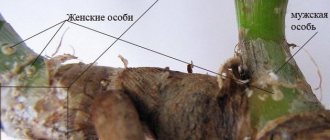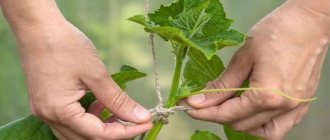Nitrogen is an essential element for the full growth and development of garden crops. However, plants do not actively absorb ammonia, an intermediate product of the natural nitrogen cycle. That is why its aqueous solution, that is, ammonia, is often absolutely irreplaceable for the garden.
The use of ammonia is sometimes more effective than traditional organics, which release nitrogen only after a long decomposition process. After all, ammonia begins to act immediately. In addition, this caustic chemical compound, when used correctly, easily repels most dangerous pests.
Why do you need ammonia fertilization?
Ammonia is rich in nitrogen, which is required for plants to grow green foliage. And the strong smell of the liquid will repel pests: mole crickets, aphids, wireworms, carrot and onion flies, ants, midges that hover around indoor flowers.
The following signs indicate nitrogen deficiency:
- Thinned stems;
- Poor foliage development;
- Falling of flowers, their early wilting;
- The leaves of the plant are pale or yellow below;
- Loss of resistance to frost in shrubs and fruit trees;
- The plant slows down in growth.
Attention! When using ammonia, be careful: inhaling the vapors may impair your breathing. Breed it outside or with open windows.
Precautionary measures
Ammonia can enter the body not only, as doctors say, “orally,” but it can also be absorbed through the skin and mucous membranes. A person, unlike plants that do not have an “ammonia depot,” is subject to the cumulative action of ammonia, that is, it, having accumulated, can manifest itself suddenly. And poisoning with this substance is severe, with damage to the kidneys and urinary tract.
Therefore, the use of personal protective equipment in the form of latex gloves, masks and goggles is mandatory. If you notice a change in your health for the worse, immediately drink at least a glass of warm milk - only real milk, not milk-containing liquid from a package!
Aggressive ammonia vapors can also ruin many types of plastic coatings and even the insulation on wires.
Therefore, it is advisable to water and spray indoor plants with windows and doors open to create a draft without standing on the leeward side while doing this.
How to get the concentration right
Despite the fact that this liquid is not dangerous for plants, when preparing the mixture, the proportions of ammonia and water must be observed. In order not to be too clever or if you are afraid of overfeeding, water the plantings with a mixture of medium concentration. How to prepare it: dissolve 20 ml of 10% ammonia in 10 liters of water.
If you see clear signs of nitrogen starvation, then you can prepare a solution of the highest strength: pour 50 ml of ammonia per 10 liters. To prepare a high-dose drug, pour 25 ml of ammonia into a bucket of water.
Minimum dosage for feeding: add 10 ml of the drug to a bucket of water.
Memo to vegetable growers and gardeners! If you fertilize the plantings with ammonia, then other nitrogen fertilizers cannot be used so as not to build up excess green mass.
Ammonia is applied in warm weather early in the morning or in the evening. Hypertensive and hypotensive patients should be especially careful.
Ammonia is a volatile substance, so add a little apple cider vinegar or citric acid to the solution. Acidified ammonia evaporates less and really helps plants grow green mass.
Description and features of use
Ammonia , also known as ammonia, can be found in any pharmacy. Usual dosage form: 10% solution (sometimes concentrated 25% solution ) in 40 ml vials. Ammonia is colorless, but has a characteristic pungent odor.
Plants absorb nitrates in large quantities, but ammonia is an exception. Plants do not accumulate it in their tissues, and therefore you can safely use ammonia as a top dressing.
Ammonia is also good because it begins to act immediately. Organic fertilizers require time for the process of decomposition under the influence of microorganisms to begin. Only after this the plants will receive the necessary nitrogen. To obtain nitrogen from ammonia, the participation of microorganisms is not required; it is perfectly absorbed by itself.
Reference! Ammonium and aqueous ammonia ions are medium-strength alkalis. Alkalis help prevent acidification of the soil so that liming is not necessary. If the planted plants do not like acidic soil, adding organic fertilizers along with ammonia will create comfortable conditions for them.
How to spray and water
Treatment is carried out in the evening, after watering , or early in the morning, always in cloudy weather. Ammonia is an extremely volatile compound, so to use it you need to choose a type of watering can that does not produce a stream, but separate thin streams. Using the first type of watering cans will lead to wasteful consumption of the substance. If you need to treat a large area or individual fruits, the sprayer is switched to spray mode.
Houseplants, as well as seedlings, are watered from a watering can without a nozzle. When watering , it is important to ensure that the solution does not fall on the leaves and stems, but only on the ground, since ammonia causes chemical burns when it gets on greens. For prevention, it is best to spray the plants with water immediately after watering with ammonia : even if a drop of alcohol gets on them, it will be washed off.
Benefits of use
For plants, nitrogen is a key nutritional element. They cannot absorb it from the air, but they are able to absorb nitrogen contained in the soil. If the soil is rich in nitrogen, plants grow faster, bloom luxuriantly, become covered with dense foliage and bear fruit well. The following factors indicate a lack of nitrogen:
- leaves turn yellow, lower leaves become pale;
- the plant is stunted, with a thin stem and small leaves;
- slow growth and lack of flowering;
- the plant is sickly, with reduced immunity, and is not resistant to even light frosts.
Important! If plants do not have enough nitrogen during the growing season, you can not count on a large harvest.
If you notice one or more of the listed signs, you urgently need to feed the plants with nitrogen. you can for this , but it accumulates in tissues, so ammonia would be the best solution. In addition, ammonia repels insects with its odor.
Although all plants need nitrogen, their ability to absorb it varies. Ammonia nitrogen is most absorbed by seedlings. Among already mature plants, the main consumers of ammonia are cucumbers and tomatoes, garlic and onions , as well as bell peppers. As for flowers, ammonia works well on all bulbs, clematis, dahlias, peonies, nasturtiums, rose bushes, zinnias and pansies (violets). A special case is strawberries . She also needs ammonia, but not because of nitrogen, which she poorly absorbs, but to protect the berries from pests .
Which plants can be fed with nitrogen?
- A medium concentration solution can be used to feed eggplants, zucchini, cabbage, pumpkin, rhubarb, and peppers.
- For fruit and berry bushes - plum, cherry, blackberry, raspberry, it is enough to pour a low concentration mixture under the root.
- A solution of medium and low dosage can be used to water cucumbers, tomatoes, garlic, corn, carrots, beets, apple trees, gooseberries, and currants.
- Radishes, onions, and pears will respond well to watering with a low dosage solution.
Before watering with ammonia, the plants should first be watered with plain water. Do not use this substance more than once a week, and start feeding with a small dosage.
How to strengthen tomato seedlings
To strengthen tomato seedlings, now is the time to fertilize with ammonia. Dissolve 1 tsp. ammonia in a bucket of water, pour the bushes at the root.
If you notice a wireworm or mole cricket on the site, then when planting seedlings in the ground, pour 0.5 liters of a medium-strength preparation into each hole.
After the tomato bushes are planted in the greenhouse, after 5-6 days, spray the “migrants” with a low-dose solution.
Organize the next spraying during flowering time to strengthen the tomato flowers. The next feeding will be useful for tomatoes when you harvest your first crop.
Experienced vegetable growers advise: for better fruit ripening during the autumn cold snap, spray the tomatoes with a weak ammonia solution.
Take the following precautions when using this drug:
- Prepare the solution outside.
- Do not inhale vapors of the substance.
- Use protective equipment: glasses, a respirator, a plastic apron and latex gloves.
Alternative to ammonia against pests
As an alternative way to combat soil and other pests - chafer larvae, onion fly, wireworm, etc. - use metarizin , as well as avermectins - Fitoverm, Actofit and others.
sprinkle with these preparations - this will be a good fight against aphids, spider mites and other mites, all kinds of moths, etc.
In addition, weak solutions of oxalic acid (sold in all stores and on beekeeping websites, included in descaling products) with constant watering of plants expel the cockchafer and wireworm.
Discuss the video
Ammonia fertilizer for cucumbers
Spring feeding with ammonia is very useful for cucumbers. As soon as the shoots grow to a height of 15 centimeters, carry out the first fertilizing with the minimum dosage of the drug. Then it is recommended to carry out such work once a week.
When the borage begins to form buds, the bushes will benefit from watering with the mixture: 10 ml of ammonia per 10 liters of water. If the foliage turns yellow early, water the plants once with the following mixture: 25 ml of ammonia per bucket.
If you notice that the cucumbers are beginning to grow green mass, but are not blooming much, then do not feed them with nitrogen anymore. The same recommendation applies to other vegetable crops - eggplants, peppers, tomatoes.
Ammonia for processing strawberries
An ammonia preparation is not suitable for fertilizing strawberries, but to protect against diseases and pests, gardeners use ammonia.
During the season, he recommends carrying out three treatments with ammonia:
- The first time should be treated in the spring when tender young leaves appear. The solution is prepared as follows: 10 liters of water, 40 ml of alcohol, a piece of laundry soap. Water the bushes from above so that the solution gets onto the leaves, stems, and also into the soil. This type of watering will kill all pests that have overwintered in the soil. After 2-3 days, water the plants with plain water.
- After flowering, the following treatment will be required: 3 tbsp. spoons of alcohol into a bucket.
- To prepare the bushes for winter, prepare a mixture for watering strawberries: pour 40 ml of ammonia into a bucket of water, add 5 drops of iodine.
Is ammonia good for garlic and onions?
Not all gardeners know that ordinary ammonia will help stop the yellowing of garlic. Garlic is precisely the crop that suffers more than others from a lack of nitrogen in the soil. Ammonia will help him, the compounds of which garlic absorbs well.
If you are planting spring garlic, then water the entire bed with the solution after planting. When the first feathers appear, do this work again. Then, every 2 weeks, water with this solution: 1 tbsp. alcohol in a bucket.
Winter garlic is watered when the outside temperature is plus 15 degrees, then the garlic will better absorb nitrogen. In the future, it is fertilized when you notice that it is developing poorly, the feathers become thin and pale. Also dilute 1 tbsp. alcohol in a bucket.
Spraying should be carried out during the summer. Dilute 30 ml of the drug in a bucket of water. This way you will feed the plants and also rid the garlic of pests. If you know that the soil is very poor, then dilute 4 tbsp. l. ammonia per 10 liters. If the garlic grows in good soil and the feathers do not turn yellow, you need to feed it once a month.
Carry out the work in the evening so that the sun does not burn your crop. Stop watering garlic 2-3 weeks before harvest.
Common mistakes
Trying to feed the plants for sure, gardeners may exceed the concentration, which is not allowed. A concentrated solution can burn both leaves and roots of plants. Another mistake is frequent use. The minimum break between treatments should be 1 week. If you water more often, you can overfeed the plants with nitrogen.
Ammonia quickly evaporates from the solution, so it must be used immediately after preparation. There is no point in feeding with liquid prepared several days in advance. Its effectiveness is significantly lost.
Expert opinion
Zarechny Maxim Valerievich
Agronomist with 12 years of experience. Our best country expert.
Ask a Question
It is not advisable to feed crops with ammonia in the 2nd half of the growing season. At this time, they no longer need the amount of nitrogen that this substance gives them.
Benefits for onions
Ammonia is also good for onions. If you grow for greens, then spray - 0.5 tbsp. for 10 liters of water. The same work is carried out when yellow feathers appear, but only take 45 ml per 10 liters of water.
To get strong heads, dissolve 15 ml of the drug in a bucket, then water not from above, but into the hole between the rows, so that the fertilizer goes to the onion heads, not the greens.
Water once every ten days. 2 weeks before harvesting, such work must be stopped. To obtain large heads, spraying is carried out twice with a break of 7 days. It has been verified that the taste of garlic and onions does not deteriorate at all.
Have you noticed how the onion feather begins to lighten and stripes form on it? To prevent this from happening, water the onion plantings in the first half of summer with the mixture (1 tablespoon per bucket of water). Once a week is enough.
By the way, in order to scare away all its pests from cabbage, spray the leaves at the very beginning of the growing season with this solution (10 ml per 10 liters of water plus the addition of liquid soap).
Features of feeding bell peppers
Vegetable growers plant quite large pepper plantations on the plot, so much so do the owners of their summer cottages fall in love with it. When growing this crop, you should take into account the peculiarities of caring for it. First of all, disturb the weak root system of peppers less. Carry out loosening only between the rows, away from the bushes.
When planting in place, do not bury the root collar so as not to interfere with the growth of peppers. To make sure it grows healthy, feed it with nitrogen. You can tell about the deficiency of this element by looking at the leaves. They lose their healthy shine, become small, too pale.
Ammonia will solve several problems of peppers at once:
- It will prevent acidification of the soil caused by the application of manure, as well as rotting of weeds.
- The released carbon dioxide will combine with water, turning into carbonic acid. The acid reacts with calcium and magnesium, and water carries these elements to the roots.
- It will help the formation of green mass, enhance the growth of stems, and therefore for abundant fruiting.
- Will get rid of diseases and pests. The weevil will disappear if the peppers are watered with a solution (50 ml of alcohol per bucket) for 7 days. The wireworm will disappear if you pour 0.5 liters of solution (10 ml per 1 bucket) under each bush.
How to properly process peppers:
1 First watering of seedlings at the root after the appearance of the fourth leaf (1 teaspoon of 25% solution per 1 liter of water).
- After planting in the ground, also water at the root (3 tablespoons per 1 bucket of water).
- To spray the bushes, prepare a solution - 50 ml of ammonia per 1 bucket. Most of the ammonium evaporates, repelling slugs and enhancing plant growth.
Ammonia for flowers
Every summer resident must have flowers growing on his plot. Fertilizing with ammonia will also be useful for flowers. Flower growers recommend spraying when the flowers begin to fill buds. Pour 1 teaspoon of ammonia per liter.
In order for perennials to go into winter prepared, it is recommended to feed them at the root with the same solution.
The leaves are sprayed with a mixture consisting of one liter of water and a teaspoon of ammonia. Fertilizing is carried out after the leaves appear and during the formation of buds. Experienced gardeners prepare perennial garden flowers for winter by fertilizing them with ammonia.
Zinnias, peonies, dahlias, violets, nasturtiums, and clematis love a high concentration solution. And annual and bulbous flowers tolerate watering well in small dosages.
Security measures
The pungent odor of ammonia and its vapor, failure to comply with basic protective measures can be dangerous: sudden inhalation can cause respiratory arrest, so it is better to mix solutions in well-ventilated areas;
- people suffering from hypertension may cause increased blood pressure;
- ammonia is a medicine and should in no case be confused with chlorine-containing substances;
- To avoid burns, avoid contact with skin and mucous membranes.
When used correctly, following the proportions and rules, ammonia will become your indispensable assistant and friend for plants. They will certainly thank you with a healthy appearance and a rich harvest.
Partner news
Features of rose processing
When the rose bushes are freed from winter shelters, be sure to water them with an ammonia solution. Signs of nitrogen deficiency in the soil:
- Last summer the roses did not bloom so magnificently.
- If you have pruned the bushes in spring, then nitrogen will again be required to increase the green mass.
- Your roses suffered from pest infestations last season. Many of them have overwintered and are ready to attack flowers. Watering with ammonia will save you from this scourge.
- If the shoots grow sluggish and weak, then water twice a season.
So, you have removed the shelter, immediately prepare a solution for fertilizing the roots: 25 ml of ammonia per 10 liters of water. Then watch the bushes grow. If there is enough greenery, then you can simply spray it with this mixture: pour 1 teaspoon of ammonia per 1 liter. Carry out the work once a month.
Rose bushes are often attacked by aphids. To remove it, treat with an ammonia solution: add 50 ml of ammonia to 7 liters of water. Treat twice with a break of a week. To prevent the liquid from rolling off the bushes, grate a piece of laundry soap and dissolve it in warm water. Then add to the ammonia liquid.
Analogs
You can replace ammonia with ammonia fertilizers: ammonium nitrate, ammonium sulfate and chloride, ammonium carbonate, ammonia water, liquid ammonia. You can also use nitrogen-phosphorus fertilizers: ammophos and diammophos. All fertilizers containing nitrogen in ammonia form are perfectly soluble in water, nitrogen is well absorbed by all groups of plants.
Ammonia, if available in sufficient quantity, can be used in the garden as a fertilizer and insecticide. It is dosed easily, the product consumption is small, and the substance is inexpensive. Ammonia contains nitrogen in the form of ammonia, therefore it is used as an ammonium fertilizer or its substitute. When used correctly, it can become an excellent nitrogen fertilizer that nourishes plants in the first half of their growing season. Its use is especially recommended on crops that are grown for their green mass, such as greens or cabbage.
How to grow straight carrots
No matter how hard vegetable growers try, carrots are often attacked by various pests. Remember ammonia! Fertilize carrot beds with ammonia for amazing results.
Prepare 4 liters of water, add 20 ml of the drug. To prevent plants from getting burned, water from a watering can in the morning or evening. It is better to carry out the procedure at the beginning of the growing season. The next watering should be organized in the second half of summer with a mixture of medium concentration: dissolve 20 ml of 10% ammonia in 10 liters of water.
Based on the reviews of summer residents, one can judge how simply they are amazed at how smooth and sweet the carrots turn out.
Beets also love nitrogen fertilizer. It can be watered with a solution of low and medium concentration. Fertilization time is at the beginning of the growing season, as well as in mid-summer.
Finally, for all owners of summer cottages: fertilizing with ammonia will save your plantings from pests and give you a rich harvest. Try it!
Read further:
Mandatory fertilizing of plants with boric acid
How to care for strawberries after harvest
How to spend the most important 12 days immediately after your birthday
Is it possible to lose weight if you drink a lot of water: how to do it correctly, why and what kind of water is better to drink
Coffee grounds as fertilizer for the garden
All about what needs to be done with peonies in August and September: feeding, pruning, replanting
Ammonia alcohol as a fertilizer: characteristics of the substance
Ordinary ammonia is an extraordinary means for caring for a personal plot. Inside the pharmaceutical bottle there is a concentrated tincture of ammonia. An important feature of this nitrogenous chemical compound is that plants absorb it directly and do not require additional help from bacteria. Fertilizing with ammonia-based products is carried out to quickly replenish and prevent nitrogen deficiency.
If the plant lacks the specified microelement, the function of photosynthesis suffers. This manifests itself in the following symptoms:
- lack of flowering, premature wilting and shedding of buds;
- underdevelopment of leaves;
- yellowing or paleness on the lower leaf blades;
- thin brittle stem;
- inhibition or cessation of growth;
- decreased resistance to frost (for trees only).
As a result of a deficiency of nitrogen fertilizing, productivity and decorative properties are seriously affected. If symptoms appear, it is advisable to take action immediately. Fertilizing with ammonia gives a positive result already 4-5 days after treatment. This is true for garden trees, garden plants, and flowers.
Attention! Another useful quality of ammonia tincture is its effect on certain insects. The specific smell is not tolerated by mole crickets, secretive proboscis, ants, onion and carrot flies, wireworms, aphids and midges that are pests of indoor plants.
